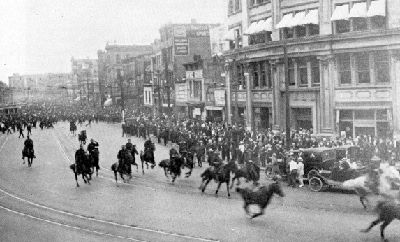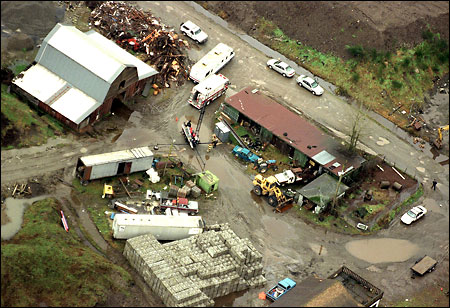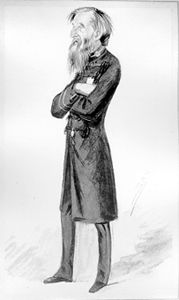Browse "Communities & Sociology"
-
Article
Residential Segregation
Anthony Richmond, in Global Apartheid (1994), suggests that refugees, racism and the new world order are integrally tied to social spatial segregation of peoples. The word apartheid literally means "aparthood" (neighbour-hood), that is, the separation of people into different areas.
"https://development.thecanadianencyclopedia.ca/images/tce_placeholder.jpg?v=e9dca980c9bdb3aa11e832e7ea94f5d9" // resources/views/front/categories/view.blade.php
https://development.thecanadianencyclopedia.ca/images/tce_placeholder.jpg?v=e9dca980c9bdb3aa11e832e7ea94f5d9
-
Article
Resistance and Residential Schools
Residential schools were government-sponsored religious schools that many Indigenous children were forced to attend. They were established to assimilate Indigenous children into Euro-Canadian culture. Indigenous parents and children did not simply accept the residential-school system. Indigenous peoples fought against – and engaged with – the state, schools and other key players in the system. For the duration of the residential-school era, parents acted in the best interests of their children and communities. The children responded in ways that would allow them to survive.
"https://d2ttikhf7xbzbs.cloudfront.net/ResistanceandResidentialSchools/a101771-v8.jpg" // resources/views/front/categories/view.blade.php
https://d2ttikhf7xbzbs.cloudfront.net/ResistanceandResidentialSchools/a101771-v8.jpg
-
Article
Rights Revolution in Canada
The time between the end of the Second World War and the signing of the Canadian Charter of Rights and Freedoms in 1982 is often referred to as the Rights Revolution in Canada. During this period, awareness of and support for human rights increased. At the grassroots level, women, queer communities, Indigenous peoples, and disability activists pushed for greater inclusion and made significant rights gains. At the same time, both federal and provincial governments passed laws that prohibited discrimination and protected human rights for more people across Canada.
"https://d2ttikhf7xbzbs.cloudfront.net/media/media/60a22170-8899-482c-a931-09f5860302dd.jpg" // resources/views/front/categories/view.blade.php
https://d2ttikhf7xbzbs.cloudfront.net/media/media/60a22170-8899-482c-a931-09f5860302dd.jpg
-
Article
Riot
Under s67 of the Criminal Code, where a riot involving 12 or more people is in progress, a justice, mayor, sheriff or other designated official is authorized to order the rioters to disperse in the name of the Queen. In popular terms, this is "reading the Riot Act.
"https://d2ttikhf7xbzbs.cloudfront.net/media/media/872f4d61-ca69-4d52-b28f-7b544f9693ed.jpg" // resources/views/front/categories/view.blade.php
https://d2ttikhf7xbzbs.cloudfront.net/media/media/872f4d61-ca69-4d52-b28f-7b544f9693ed.jpg
-
Article
Robert Pickton Case (Plain-Language Summary)
In 2001, Robert Pickton was charged with murdering 26 women at his pig farm in Port Coquitlam, BC. He was convicted on six charges and sentenced to life in prison. Pickton claimed to have killed 49 women. His case was the largest serial killer investigation in Canadian history. It was also a flash point in the wider issue of missing and murdered Indigenous women and girls. In 2012, a government inquiry found that “blatant failures” by police led to a “tragedy of epic proportions.” This article contains sensitive material that may not be suitable for all audiences. This article is a plain-language summary of the Robert Pickton Case. If you are interested in reading about this topic in more depth, please see our full-length entry: Robert Pickton Case.
"https://d2ttikhf7xbzbs.cloudfront.net/media/media/a598869a-67b8-4009-b6a7-abf3d25c07ee.jpg" // resources/views/front/categories/view.blade.php
https://d2ttikhf7xbzbs.cloudfront.net/media/media/a598869a-67b8-4009-b6a7-abf3d25c07ee.jpg
-
Article
Royal Commission on Aboriginal Peoples
The Royal Commission on Aboriginal Peoples was a Royal Commission established in 1991 in the wake of the Oka Crisis. The commission’s report, the product of extensive research and community consultation, was a broad survey of historical and contemporary relations between Indigenous (Aboriginal) and non-Indigenous peoples in Canada. The report made several recommendations, the majority of which were not fully implemented. However, it is significant for the scope and depth of research, and remains an important document in the study of Indigenous peoples in Canada.
"https://d2ttikhf7xbzbs.cloudfront.net/RoyalComissionAboriginalPeoples/RCAP.jpg" // resources/views/front/categories/view.blade.php
https://d2ttikhf7xbzbs.cloudfront.net/RoyalComissionAboriginalPeoples/RCAP.jpg
-
Article
Royal Commission on Bilingualism and Biculturalism
One of the most influential commissions in Canadian history, the Royal Commission on Bilingualism and Biculturalism (1963–69) brought about sweeping changes to federal and provincial language policy. The commission was a response to the growing unrest among French Canadians in Quebec, who called for the protection of their language and culture, and opportunities to participate fully in political and economic decision making. The commission's findings led to changes in French education across the country, and the creation of the federal department of multiculturalism and the Official Languages Act.
"https://d2ttikhf7xbzbs.cloudfront.net/media/media/74f42cfb-9915-4a55-b62d-28b95a2c107f.jpg" // resources/views/front/categories/view.blade.php
https://d2ttikhf7xbzbs.cloudfront.net/media/media/74f42cfb-9915-4a55-b62d-28b95a2c107f.jpg
-
Article
Royal Commission on the Status of Women in Canada
The Royal Commission on the Status of Women in Canada, also known as the Bird Commission in honour of its chair, Florence Bird, was established on 3 February 1967. More than 900 people appeared at its public hearings over a period of six months. In addition to providing an overview of the status of women, the report tabled on 7 December 1970 included 167 recommendations for reducing gender inequality across the various spheres of Canadian society.
"https://d2ttikhf7xbzbs.cloudfront.net/media/media/9d38ad75-a928-4980-be97-b39057ec996d.jpg" // resources/views/front/categories/view.blade.php
https://d2ttikhf7xbzbs.cloudfront.net/media/media/9d38ad75-a928-4980-be97-b39057ec996d.jpg
-
Article
Russian Music in Canada
The largest of the 15 Union Republics that until 1991 made up the Union of Soviet Socialist Republics.
"https://development.thecanadianencyclopedia.ca/images/tce_placeholder.jpg?v=e9dca980c9bdb3aa11e832e7ea94f5d9" // resources/views/front/categories/view.blade.php
https://development.thecanadianencyclopedia.ca/images/tce_placeholder.jpg?v=e9dca980c9bdb3aa11e832e7ea94f5d9
-
Article
Saint Patrick’s Basilica
Saint Patrick’s Basilica is a minor basilica located in Montreal. It was constructed between 1843–47 as a parish church for Montreal’s growing Irish Catholic population (see Irish Canadians; Catholicism in Canada). The church was elevated to the status of a minor basilica in 1989. In addition to playing a significant religious and cultural role for the city of Montreal’s Irish community, Saint Patrick’s Basilica is recognized as the mother church for English-speaking Catholics in the city (see Canadian English; Languages in use in Canada).
"https://d2ttikhf7xbzbs.cloudfront.net/stpatricksbasilica/stpatrickschurchbynotman-son.jpg" // resources/views/front/categories/view.blade.php
https://d2ttikhf7xbzbs.cloudfront.net/stpatricksbasilica/stpatrickschurchbynotman-son.jpg
-
Article
Central Coast Salish
Central Coast Salish peoples historically occupied and continue to reside in territories around the Lower Fraser Valley and on southeast Vancouver Island in Canada. They include the Squamish, Klallum, Halkomelem and Northern Straits peoples.
"https://d2ttikhf7xbzbs.cloudfront.net/media/media/a026c04c-3499-4f8d-b8cb-9e9cd56fd312.jpg" // resources/views/front/categories/view.blade.php
https://d2ttikhf7xbzbs.cloudfront.net/media/media/a026c04c-3499-4f8d-b8cb-9e9cd56fd312.jpg
-
Article
Salvation Army
The Salvation Army (sometimes referred to as the Sally Ann) officially began its work in Canada in London, Ont, on 1 June 1882. Introduced by fervent believers Mr and Mrs William Freer (Toronto), Jack Addie and Joe Ludgate (London), the Army corps was established in several Ontario towns.
"https://d2ttikhf7xbzbs.cloudfront.net/media/media/455f4c21-d47b-4e02-bd97-cf5c907a1651.jpg" // resources/views/front/categories/view.blade.php
https://d2ttikhf7xbzbs.cloudfront.net/media/media/455f4c21-d47b-4e02-bd97-cf5c907a1651.jpg
-
Article
Same-Sex Marriage in Canada
In 2003, Ontario and British Columbia became the first two provinces to legalize same-sex marriage. The federal Civil Marriage Act came into force on 20 July 2005, making same-sex marriage legal across Canada. Canada became the third country to permit same-sex marriages, after the Netherlands (2000) and Belgium (2003). Since then, all provinces in Canada have recognized same-sex marriages. Marriage itself falls under federal jurisdiction in Canada. But the provinces regulate the solemnization of marriage (the formal ceremony that is either civil or religious). They also grant marriage licenses. The Supreme Court has ruled that under the Charter of Rights and Freedoms, a religious official cannot be legally compelled to perform same-sex marriages if it is contrary to their religious beliefs.
"https://d2ttikhf7xbzbs.cloudfront.net/media/media/46a3c4ec-a503-4e72-bba8-c78f5fcd885a.jpg" // resources/views/front/categories/view.blade.php
https://d2ttikhf7xbzbs.cloudfront.net/media/media/46a3c4ec-a503-4e72-bba8-c78f5fcd885a.jpg
-
Article
Tsuut’ina (Sarcee)
The Tsuut’ina (Sarcee) are a Dene (or Athabaskan) First Nation whose reserve borders the southwestern city limits of Calgary, Alberta. The name "Sarcee" is believed to have originated from a Siksikáí’powahsin (Blackfoot language) word meaning boldness and hardiness. The Sarcee people call themselves Tsuut’ina (also Tsuu T'ina and Tsúùt'ínà), translated literally as "many people" or "every one (in the Nation)."
"https://d2ttikhf7xbzbs.cloudfront.net/32779601916_7724a5c6f6_o.jpg" // resources/views/front/categories/view.blade.php
https://d2ttikhf7xbzbs.cloudfront.net/32779601916_7724a5c6f6_o.jpg
-
Article
SARS in Canada
Canada experienced an outbreak of severe acute respiratory syndrome (SARS) in 2003. Most of the infections originated in Toronto hospitals. The outbreak led to the quarantine of thousands, killed 44 people and took an economic toll on Toronto. It also exposed the country’s ill-prepared health-care system. Confusion around SARS fuelled an uptick in anti-Asian racism and anti-immigrant sentiment. Click here for definitions of key terms used in this article.
"https://d2ttikhf7xbzbs.cloudfront.net/media/Twitter_Cards/SARS_twitter_card.jpg" // resources/views/front/categories/view.blade.php
https://d2ttikhf7xbzbs.cloudfront.net/media/Twitter_Cards/SARS_twitter_card.jpg
